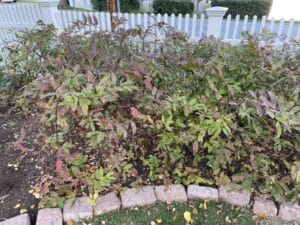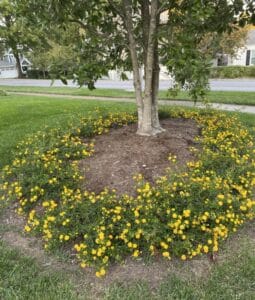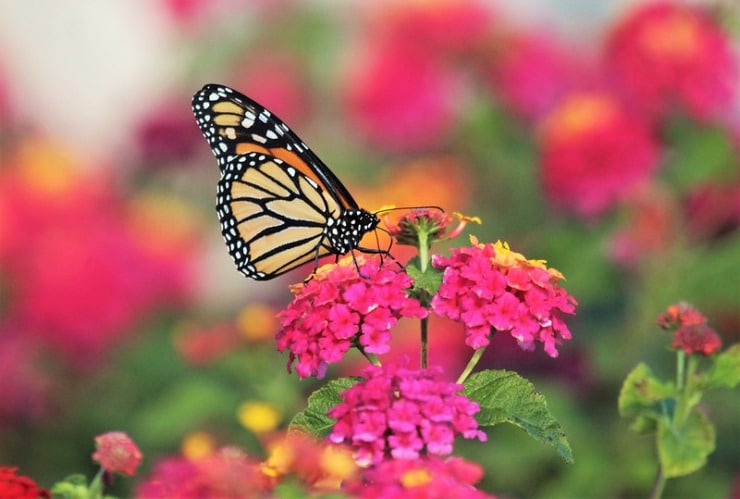The strange case of the disappearing milkweed is explained.
Tweetspeak Poetry’s Year of the Monarch is coming to an end. For the past year, led by our Poet Laura Dheepa Maturi and writer Laura Boggess, we’ve been celebrating the Monarch butterfly. We even had a milkweed challenge – planting the Monarch’s favorite plant.
I kept quiet, but I shuddered when I thought of planting milkweed.
I live in Missouri. Most of my state is in the Eastern Monarchs’ migratory path to and from central Mexico. I have seen them in my yard, never in profusion but in numbers sufficient to say they’re here and looking for sustenance.
We moved into our house 38 years ago. It was new construction, a small development of 14 houses in an established suburb of St. Louis. A plant nursery formerly occupied the space, a remnant of the time when floral greenhouses and vegetable farms dotted the area to serve the large market in the city of St. Louis.
When we signed the contract, what we didn’t know was that the builder would be removing the top six feet of dirt, including anything remotely resembling topsoil. We were down to good old Missouri clay, hardpacked. All that rich soil developed over decades by the nursery had disappeared. We had a soil analysis done: zero organic matter. Thus, we began living in our new home and embarking on a significant soil restoration process.
In a back corner where we had a river birch plant, the neighbor across the fence had planted honeysuckle. Yes, good old invasive honeysuckle. She liked the smell. Restoration of the soil had to go hand-in-hand with eradication of the only thing that seemed to flourish in clay – honeysuckle.

The scene of the crime: the itea patch
I was ruthless. I am still ruthless, when it comes to weeds. I see those small green sprouts and I pounce, joyfully ripping them from the dirt.
It was during one of those battles that I spotted what at first had blended in with the itea bushes we’d planted. It was a vine-like plant, and it was densely threaded all through the itea.
I attacked. I pulled and yanked and chopped, yelling the whole time at those weeds that had dared to rob my bushes of sustenance.
A few weeks later, I discovered they’d return. Regularly. I’d rip and chop, and they would eventually show their heads again. I pondered all kinds of dastardly remedies when I decided to see if I could figure out what this awful weed was.
I identified it.
It was milkweed.
Either seeds had been dropped by birds or they’d remained buried until my builder ripped off the soil that covered them.

Lantana, alternative to milkweed
Now I faced a dilemma. I knew Monarch butterflies loved milkweed. I’d seen Monarchs in our yard, but never around the milkweed area (likely because I was a very thorough eradicator). My choice was let the milkweed grow and strangle the itea, or see if something else might substitute, something that didn’t look like a weed.
I ended up with Monarda, or bee balm, which also seems to attract butterflies, and lantana, which attracts large and small butterflies in droves. I’ve planted lantana for years now, and it seems an acceptable substitute. And I still see the occasional Monarch in the yard.
As for the milkweed, well, it’s still around. We were on vacation recently for three weeks, and when we returned, I discovered it had taken advantage of my absence. It was joyfully strangling the itea, probably hoping I had moved away.
All I can say is, I upheld my reputation as the Milkweed Eraser.
Photo by Monkeystyle3000, Creative Commons, via Flickr. Post by Glynn Young.
How to Read a Poem uses images like the mouse, the hive, the switch (from the Billy Collins poem)—to guide readers into new ways of understanding poems. Anthology included.
“I require all our incoming poetry students—in the MFA I direct—to buy and read this book.”
—Jeanetta Calhoun Mish
- Poets and Poems: Sandra Marchetti and “Diorama” - April 24, 2025
- Poets and Poems: Christina Cook and “Roaming the Labyrinth” - April 22, 2025
- Longfellow’s “Paul Revere’s Ride”: Creating a National Legend - April 17, 2025


L.L. Barkat says
Ooooo…
I confess:
This hurts my heart. (Even though it has amusing aspects. 🙂 )
Maybe there should be a way to buy Milkweed offsets? 😉
I’m always interested in questions of how to balance all these differences in lifestyle hopes and dreams. My yard is now welcoming milkweed, but I’m not sure my neighbors would agree with the welcoming. 🙂
L.L. Barkat says
Oh, and sadly there is no substitute for milkweed for the Monarch baby to eat. It would be akin to offering a hungry man a lovely pewter plate with pictures of fruit and vegetables engraved upon it. Pretty, but entirely poor as a possible meal. 🙂